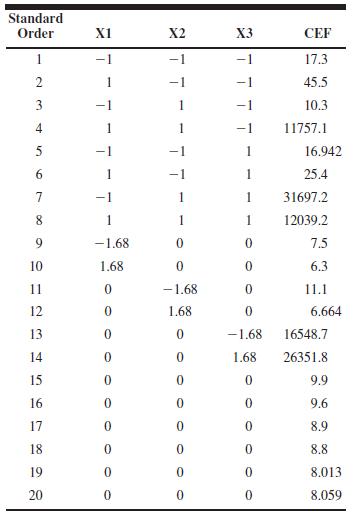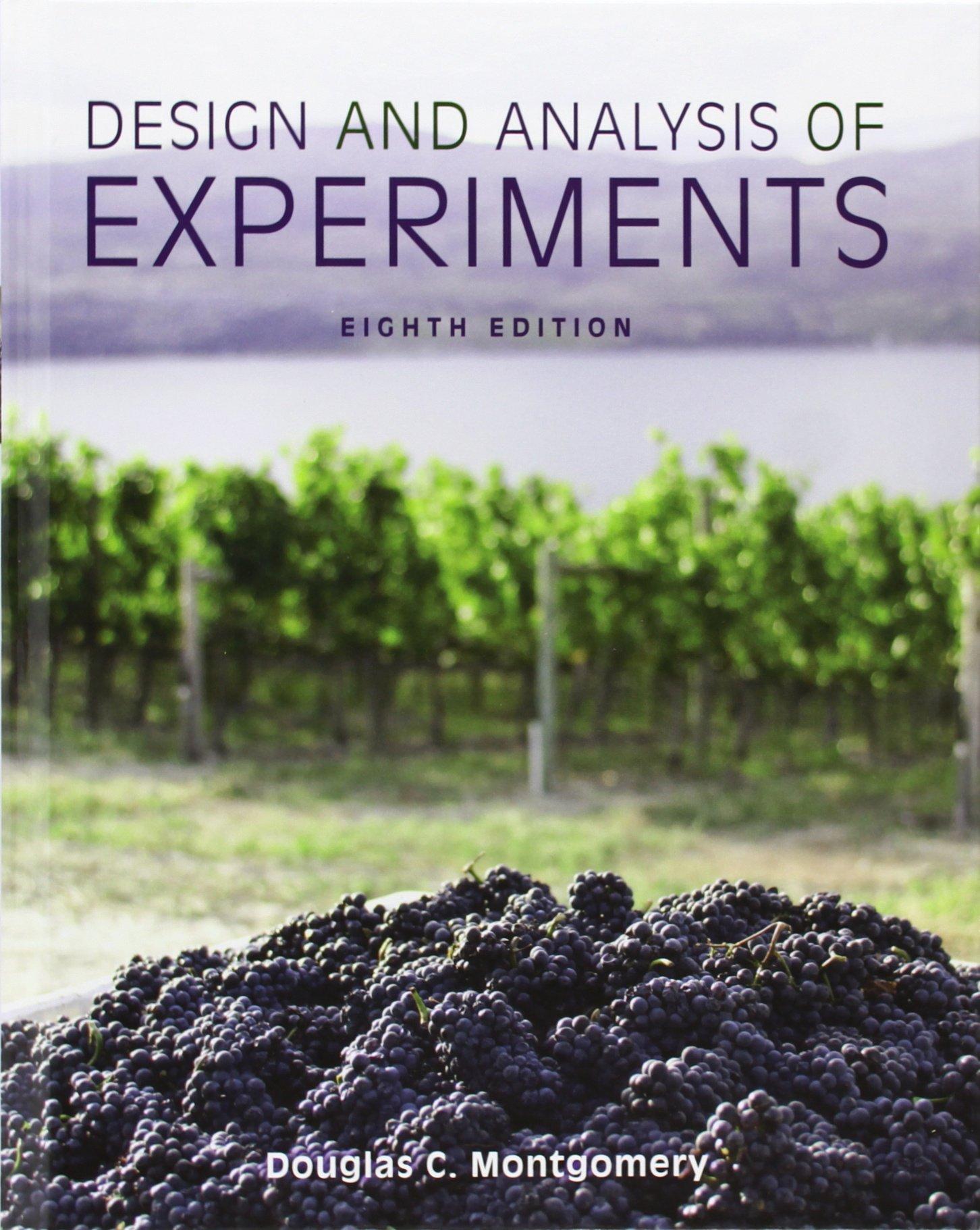11.36. An article in the Journal of Chromatography A (Optimization of the Capillary Electrophoresis Separation of Ranitidine...
Question:
11.36. An article in the Journal of Chromatography A
(“Optimization of the Capillary Electrophoresis Separation of Ranitidine and Related Compounds,” Vol. 766, pp. 245–254)
describes an experiment to optimize the production of ranitidine, a compound that is the primary active ingredient of Zantac, a pharmaceutical product used to treat ulcers, gastroesophageal reflux disease (a condition in which backward flow of acid from the stomach causes heartburn and injury of the esophagus), and other conditions where the stomach produces too much acid, such as Zollinger–Ellison syndrome. The authors used three factors (x1 $ pH of the buffer solution, x2 $
the electrophoresis voltage, and the concentration of one component of the buffer solution) in a central composite design.
The response is chromatographic exponential function (CEF), which should be minimized. Table P11.12 shows the design.
(a) Fit a second-order model to the CEF response.
Analyze the residuals from this model. Does it seem that all model terms are necessary?
(b) Reduce the model from part
(a) as necessary. Did model reduction improve the fit?
(c) Does transformation of the CEF response seem like a useful idea? What aspect of either the data or the residual analysis suggests that transformation would be helpful?
(d) Fit a second-order model to the transformed CEF response. Analyze the residuals from this model. Does it seem that all model terms are necessary? What would you choose as the final model?
(e) Suppose that you had some information that suggests that the separation process malfunctioned during run 7. Delete this run and analyze the data from this experiment again.
(f) What conditions would you recommend to minimize CEF?

Step by Step Answer:







